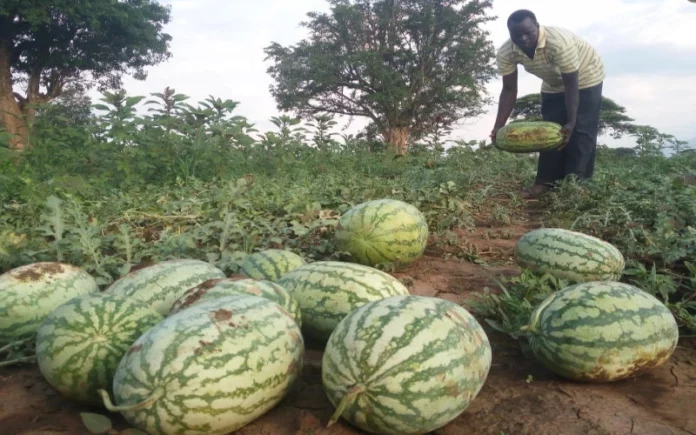Hailing from Chepsigot village in Kerio Valley, Amos Morori’s dream was to become the first engineer to grace his neighbourhood. But it was not meant to be.
The experienced watermelon farmer completed secondary education and failed to raise enough school fees to pursue higher education.
Like many success stories, Amos Morori didn’t hang his head low. While herding his father’s livestock in the semi-arid plains of Kerio Valley, he strategised a formula to help his family’s dire financial situation.
Occasionally, Morori would grow kales and use the profits to help his father educate his younger siblings.
Owing to the blazing heat in the region, his best option was to utilise irrigation farming techniques. This was how Amos Morori settled on Watermelon farming.
“I settled for watermelons because they do extremely well in Kerio Valley. The fruit is high yielding, matures fast and has a huge market,” the farmer stated.
A couple of years down the line, the margins he was receiving from his business were so good that he instantly became the only millionaire in his village.
He is known for farming big watermelons, with his record fruit weighing 25 kilograms.
Looking back, Morori testifies that venturing into farming was an unmatched decision. He started watermelon farming armed with Sh. 40,000 capital, after convincing his father to sell a few cattle.
His first yield was on an acre of land, before up-scaling to 10 acres on the banks of River Kerio.
“After 2½ months, I harvested 30 tonnes of the fruits, fetching over Sh. 800,000. Depending on the season, we sell the fruit between Sh. 14 and Sh. 30 (per kilo),” he disclosed.
It is common knowledge that watermelon requires sufficient water to grow well, especially during the fruit formation stage.
He tells farmers that venturing into watermelons without water is akin to shooting yourself in the foot.
Also, climate plays a big role. Point in case, watermelons from highlands are of poor quality but those grown under hot, nourishing sunlight are sweeter, bigger and greater in number.
Morori explains that this is the reason why his farm is stocked with brokers and clients from Nairobi and Kisumu each harvesting season.
How you can make Sh1m growing watermelons in Kenya
He has specialized in planting the Sukari F1 watermelon due to its hard and fleshy outer skin. This increases its immunity to most farm pests. He has also cultivated Sugar Baby on his farm.
“I spend between Sh. 50,000 and Sh. 70,000 per acre. This covers cost of seeds, labour, chemicals, irrigation and fertiliser,” he says proudly explaining his high turnover.
“No season have I experienced a loss in this venture.”
Amos Morori tells farmers that it is very easy to start watermelon farming. The plant requires good management to get good harvests. He recommends a spacing of 1.5m between rows and 1m between plants.
Furthermore, you will never lack market for watermelons as demand continues to soar due to its nutritional benefits. He also advises farmers to research the market and get connected before harvesting their produce.
“Middlemen usually take advantage of desperate farmers, especially those who get high yields but find no market. Lack of ideal linkages for farmers means brokers dictate farm prices,” he explained.
His parting shot was a word to the youth facing the harsh reality of unemployment in Kenya. He advises them to change their perception towards farming, that it is a difficult pursuit done by the ‘uneducated’.
“Many people, especially the youth, see farming as an occupation of the old and illiterate,” he said, calling upon the government to encourage students to venture into agriculture from a tender age.








